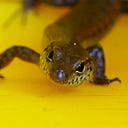Member-only story
Louisa’s Mistletoe
An unusual plant named after a remarkable woman
Blue Mountains, New South Wales, Australia
Louisa’s Mistletoe (Atkinsonia ligustrina) is an unusual plant.
Most other mistletoes in the family Loranthaceae grow on tree branches. They are common on eucalypts, and plants may be so big they stand out among a tree’s own foliage. But Louisa’s Mistletoe is different. It is one of the few species in the family to grow from the ground as a shrub. Instead of attaching to branches, it seeks out the roots of host trees as a source of nutrients. Sometimes a single mistletoe parasitises several trees at once.
In spring, it bears yellow star-shaped flowers that deepen to orange and scarlet as they mature. The plant produces copious bright red berries. To catch it in fruit, you have to be on the dry rock ridges of the Blue Mountains — the only place it is found — at just the right time.
—
The Blue Mountains are an hour or so west of central Sydney. Once across the Nepean River, the road climbs quickly, first through spreading suburbs and then through an expanse of eucalypt forest on escarpments and valleys of golden Hawkesbury Sandstone.
In 1817, Colonial botanist Allan Cunningham collected specimens of this strange shrubby mistletoe in the Blue Mountains near Mount Tomah. He…
